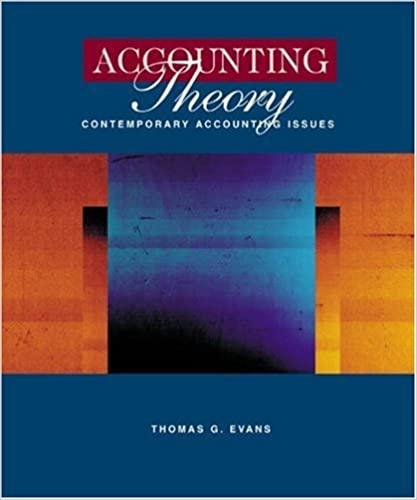Multipel choise question please only give answer no solution required Calculate the future amount and effective annual rate of $2,000.00 deposited in an account for
Multipel choise question
please only give answer no solution required
- Calculate the future amount and effective annual rate of $2,000.00 deposited in an account for one year at 12% per annum interest compounded monthly.
A. The amount accrues to $2,253.65 and the effective rate is 12.12% B. The amount accrues to $2,253.65 and the effective rate is 12.86%
C. The amount accrues to $2,253.65 and the effective rate is 12.00% D. The amount accrues to $2,253.65 and the effective rate is 12.68%
13. Find the interest rate for an amount of $500.00 invested today which earns $1,000 in 10 years from now.
- 12.79%
- 7.98%
- 3.53%
- 7.18%
14. The sum of $1,000 invested today at 5.075% will accrue to the sum of $2,000 in approximately how many years from now?
- 12 years
- 13 years
- 14 years D. 15 years
- Samyo Farms is a major wheat producer in Australia. The company has a cost of debt of 6% and cost of equity of 8%. The proportion of debt is 60% and the remaining is equity cost. If the tax rate is 30%, what is the weighted average cost of capital?
-
- After tax cost of debt is 2.52% and the weighted average cost of capital is 5.72%
- After tax cost of debt is 70% and the weighted average cost of capital is 5.72%
- After tax cost of debt is 2.8% and the weighted average cost of capital is 5.72%
- After tax cost of debt is 30%, cost of equity is 7% and the weighted average cost of capital is 5.72%
- A limitation of Weighted Average Cost of Capital (WACC) is that:
- It may not represent the risk of new projects
- It is used by all the companies in the world to make decisions so why should everyone be the same.
- WACC is not the best in the calculation of NPV when the project is a construction project
- None of the above
17. Debt financing is profitable for a company but when it gets too much, it creates the risk of insolvency. The proportion of debt and equity that maximises the wealth of shareholders is called what?
- The maximum capital point
- Optimal capitals
- Optimal structure
- Optimal capital structure
- Miller and Modigiliani proposition 1 states that the capital structure decisions a company makes will have no effect on the value of the company if:
- There are no taxes
- There are no information costs
- There are no transaction costs
- All of the above
- Explain the concept of agency cost and its application to the firm
- Agency cost is the fees that agents collect before signing any deal with the airline they are working for
- It results from the misalignment of the interests of the agent and the principal
- It results from the common interest between the company and the employers
- Agency cost is the fees that banks pay to the regulatory authority that regulate them.
20. The Royal Commission into financial services recognised some issues that led to the malpractices in the financial services industry in Australia including which of the following:
- Being too kind to customers
- Charging interest rates that are higher than those of the banks in America
The pursuit of short-term profit at the expense of basic standard of honesty
D. The ignorance of the bankers in ethics of business
Step by Step Solution
There are 3 Steps involved in it
Step: 1

See step-by-step solutions with expert insights and AI powered tools for academic success
Step: 2

Step: 3

Ace Your Homework with AI
Get the answers you need in no time with our AI-driven, step-by-step assistance
Get Started


